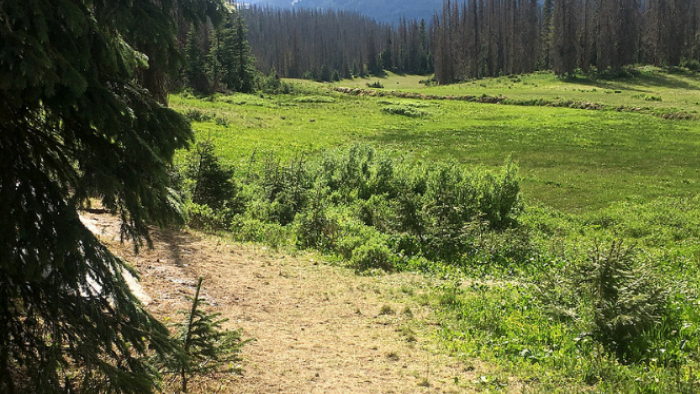Conservation Finance Learning Lab Recap, Part One: What's a Carbon Market?

In Brief
Participating in carbon markets can be tricky, even for seasoned financiers. We're here to help.
Highstead and the Conservation Finance Network, partners in this website, run a multipart webinar series on premises and promises in the field.
The first session zoomed in on defining and strategizing around the marketplace for nature-based solutions.
In this session, panelists from a variety of organizations described their engagement in carbon markets. Spencer Meyer, Head of Science at the carbon-exchange company NCX, moderated a Zoom panel of professionals from not-for-profits, for-profits, carbon project developers, carbon project sellers, and more.
Steph Harris, Director of Carbon Markets at carbon project developer 3Degrees, gave an update about the state of carbon markets. She described similarities and differences between voluntary and regulatory carbon markets: voluntary credits are ones that companies purchase to offset their emissions, while regulatory credits are required to comply with state, national, or international emissions regulations. She added an overview of the process of developing a carbon project. The graphic illustrates the diversity of types of carbon credit projects.
Carbon markets are maturing: increasingly, there are distinctions between compliance and voluntary market standards, protocols, and prices. There are also divergences between carbon reduction/avoidance projects (such as avoided deforestation) and removal projects (such as direct air capture), with the market increasingly valuing removal projects. In 2021, forestry and land use credits made up the majority of voluntary carbon market credits and captured the highest price per credit.
Harris shared recent financial numbers: internationally, forestry and land use credits are selling for an average of $5.80 per ton on the voluntary market, though forestry credits in the U.S. are selling in the low teens to high twenties per ton. The carbon market continues to be volatile, due to factors like changing corporate demand for credits, new verification standards, and increasing federal regulatory scrutiny.
Matt Markot, Executive Director of the Loon Echo Land Trust in Maine, talked about a carbon aggregation project recently completed by the land trust. The land trust worked with Finite Carbon to develop an aggregated project across properties that the land trust owns and holds easements on. Matt shared that his trust committed to this project in part through a read of future forecasting about timber markets. Though the trust and many owners of conserved land in Maine have conventionally used timber harvest to finance conservation activities, they decided that selling carbon credits was a surer long-term financing opportunity.
Loon Echo Land Trust worked with other land trusts in their region to identify properties. Though the trust had opportunities to work across the state in aggregating parcels, they decided to focus their efforts in western Maine, where they are based. This allowed them to both remain in a region with similar forest types and forest management histories, and also to leverage close personal relationships.
Jillian Dyszynski is the Director of Climate Finance at the American Forest Foundation (AFF). She talked about the American Forest Foundation’s partnership with the Nature Conservancy (TNC) to run the Family Forest Carbon Program. This program makes access to carbon markets possible for small-scale forest landowners. The American Forest Foundation and the Nature Conservancy administer this program, using philanthropic funds to cover their staff time and pay for up-front costs like forest management plans for each enrolled landowner. Landowners across the United States can enroll in the Family Forest Carbon Program. AFF/TNC use a “dynamic baseline” to analyze carbon stores on an enrolled landowner’s property, keeping costs low while ensuring true additionality.
The Family Forest Carbon Program draws support in part from the July 2022 sale of a green bond by AFF’s subsidiary Family Forest Impact Foundation, LLC. This $10 million bond will provide capital to sustain this program, particularly to support early-stage project development costs, which can be high and substantial at a time when there are not significant carbon revenues.
Many attendees asked about the details of carbon projects. How long is a property enrolled? How many acres are in enrolled properties? How many dollars per acre can a landowner selling carbon credits expect to receive? The panelists hesitated to answer these questions, in part because the terms of specific contracts and verification programs vary and are confidential, but in larger part because carbon credits are extremely place- and forest-specific.
Steph Harris from 3Degrees commented that, in her international experience, projects seem to work best when developers are located near the place where they are developing projects and are aware of local circumstances and land use histories. So too, the types of management practices and payments depend significantly on prior land use of a parcel and forest types. The American Forest Foundation seeks to protect landowners, and so in their contracts with landowners they specify a payment floor for each credit generated even though prices may fluctuate below this amount.
Another key theme was that working in partnership is critical to making these projects happen. Loon Echo Land Trust, an organization with just three staff, found that working with Finite Carbon was the best way for them to pair their existing strengths in land management and landowner relations with a partner with knowledge about the intricacies of carbon project development, such as carbon inventories, markets, and verification processes. They describe the importance of bringing many partners to a table to make a project happen, because they don't have all the needed capacity, skills, or time to engage. That message is true, too, in the conversation that the panelists were able to have with each other: each bringing their own perspectives on and engagements with carbon markets to together knit a story of the current and possible future states of carbon markets.
The Conservation Finance Learning Lab series will continue throughout Spring, 2023. Visit Highstead’s website for recordings of this session and upcoming sessions.